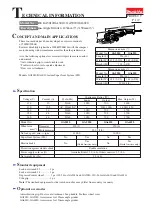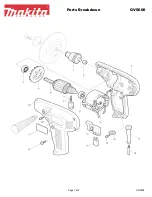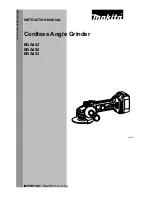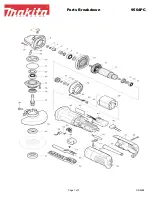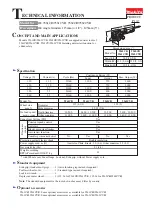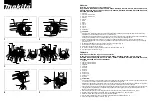
5
MK-SDG
Revision 09/05, Effective Date September 30, 2005
If using an extension cord make sure it is in good condition. When using an extension cord, be sure to
use one heavy enough to carry the electric current your product will draw. An undersized extension cord
will cause a drop in line voltage that will result in a loss of power and overheating. TABLE 1, Page 9
shows the correct AWG size to use depending on cord length and nameplate ampere rating. If in doubt,
use the next heavier gage. The smaller the gage number, the heavier the cord.
SAFETY
(
(
)
)
on
USE THE PROPER EXTENSION CORD
(
(
)
)
on
USE PROPER APPAREL
Do not wear loose clothing, gloves, neckties, rings, bracelets, or other jewelry that may be caught in
moving parts. Non-slip footwear is recommended. Wear protective hair covering to contain long hair.
(
(
)
)
on
ALWAYS USE SAFETY GLASSES
(
(
)
)
on
Safety glasses should always be worn when working around power tools. In addition, a face,
dust mask or respirator should be worn if a cutting operation is dusty. Everyday eyeglasses
only have impact resistant lenses and may not prevent eye injury-they are NOT safety glasses.
(
(
)
)
on
DO NOT OVERREACH
Keep proper footing and balance at all times by not overreaching.
(
(
)
)
on
SECURE WORK
Clamps or a vise should be used to hold work whenever practical. Keeping your hands free to operate
a power tool is safer.
(
(
)
)
on
MAINTAIN TOOLS WITH CARE
Keep tools clean for the best and safest performance. Always follow maintenance instructions for
lubricating, and when changing accessories.
(
(
)
)
on
DISCONNECT TOOLS
Power tools should always be disconnected before servicing or when changing accessories, such as
blades, bits, cutters, and the like.
(
(
)
)
on
REDUCE THE RISK OF UNINTENTIONAL START
Make sure the ON/OFF switch is in the OFF position before plugging in a power tool.
(
(
)
)
on
(
(
)
)
on
(
(
)
)
on
MAKE THE WORKSHOP KID PROOF
Make the workshops kid proof by using padlocks, master switches or by removing starter keys.
(
(
)
)
on
DO NOT FORCE THE TOOL
A power tool will do a job better and safer operating at the rate for which it was designed.
(
(
)
)
on
USE THE RIGHT TOOL
Do not force a tool or an attachment, to do a job that it was not designed to do.





















